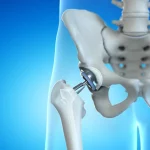What is Pediatric Orthopedic?
Pediatric orthopedic is a special type of doctor’s work that helps kids who have problems with their bones, muscles, and joints. These problems might be from birth, like being born with crooked feet or hips that aren’t formed correctly. Or they could happen as the child grows, such as getting a broken bone while playing. The orthopedic doctor helps by checking and treating these issues, sometimes using exercises, special equipment like braces, or even surgery to fix bones or joints. Their main goal is to help kids move and feel better, making sure they can play and grow just like other kids.
About Pediatric Orthopedics
The field of study that addresses the management, diagnosis, treatment, and prevention of orthopedic issues in children is known as pediatric orthopedics. This subspecialty deals with a broad spectrum of disorders affecting the bones, muscles, and joints of children.
Whether the condition is developmental, acquired over time, or present from birth, your pediatric orthopaedist provides comprehensive care.
Numerous disorders affecting children’s bones, joints, muscles, and entire musculoskeletal system are common pediatric orthopedic conditions.
These conditions include, among others:
- • A congenital condition known as “clubfoot” causes one or more of a baby’s feet to turn inward and downward at birth. Often, therapy entails mild casting, stretching, and occasionally, surgery.
- • Hip dysplasia in development (DDH) is the result of improper hip joint formation in a child. Prompt diagnosis and treatment are essential to avert chronic issues. Surgery or the use of a brace could be part of the treatment.
- • Scoliosis is a condition where the spine curves sideways and can occur in children as they grow. Treatment options for mild to severe cases might include bracing, observation, or, in more extreme cases, surgery.
- • Broken bones are frequently sustained by children as a result of falls and mishaps while playing. The course of treatment varies based on the location and extent of the fracture and may involve surgery or casting.
- • Leg Length Differences: Having a leg that is longer than the other can make walking challenging. In order to equalize leg lengths, treatment options may include inserts, specialty footwear, or in certain situations, surgical procedures.
- • A collection of hereditary diseases known as muscular dystrophy lead to progressive loss and weakness of the muscles. Physical therapy, supportive care, and occasionally medication to control symptoms are all part of the treatment.
- • Osgood-Schlatter Disease: Stress on the growth plate at the upper part of the shinbone is a common cause of knee pain in growing adolescents. Therapy and rest are common components of treatment.
- • Children with joint inflammation due to a form of arthritis known as juvenile idiopathic arthritis (JIA). Medication, physical therapy, and occasionally injections into the afflicted joints are some of the treatment options used to try and reduce pain and swelling.
- • Pediatric sports injuries include a range of conditions like sprains, strains, and ligament injuries that are treated with rest, physical therapy, and occasionally surgery.
- • Toe Walking: If a child’s habit of walking on their toes continues and interferes with their ability to walk or develop, treatment or intervention may be necessary.
These are but a handful of the typical orthopedic conditions that affect kids. In order to manage these conditions and guarantee that children grow and develop to their full potential, prompt diagnosis and appropriate treatment are essential. Orthopedic specialists, pediatricians, physical therapists, and other medical personnel are frequently involved in the treatment process.
Orthopedic condition diagnosis in children
Children need the specialised care of a pediatric orthopedist because they are unable to communicate their symptoms and conditions.
The majority of the time, children’s orthopedic conditions and their consequences are apparent. To ascertain the condition and conduct an examination, your healthcare provider will, nevertheless, order a variety of tests and procedures. These examinations include, but are not limited to, functional movement tests, lab tests, reflex and sensory testing, X-rays, musculoskeletal ultrasonography, and manual evaluation.
Management of pediatric orthopedic disorders
The course of treatment for your child’s musculoskeletal ailment will be determined by a number of variables, including their medical background, the intensity of their symptoms, their general health, and the nature of their ailment.
Typical alternatives to treatment include:
- • Active monitoring
- • Pharmaceutical intervention
- • Non-invasive techniques like bracing, casting, splinting, and orthotics
- • Surgery and other invasive practices, like correcting deformities
- • Physical therapy
For your child’s recovery, a variety of treatments may occasionally be combined to provide thorough and efficient care.
For More Information Contact: Dr. Ashwani Maichand





